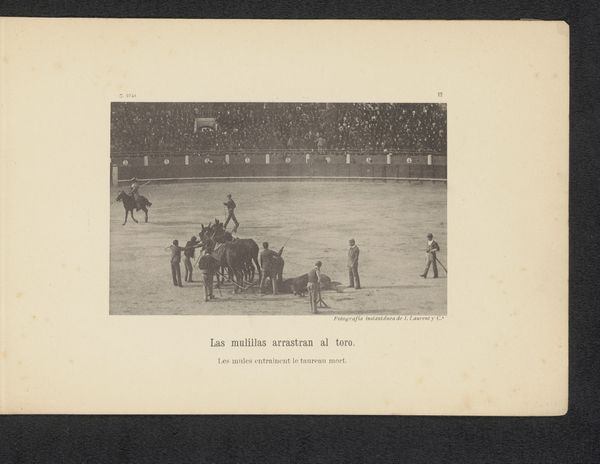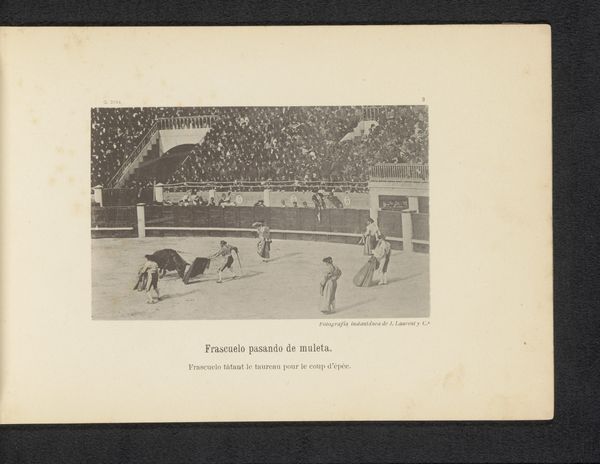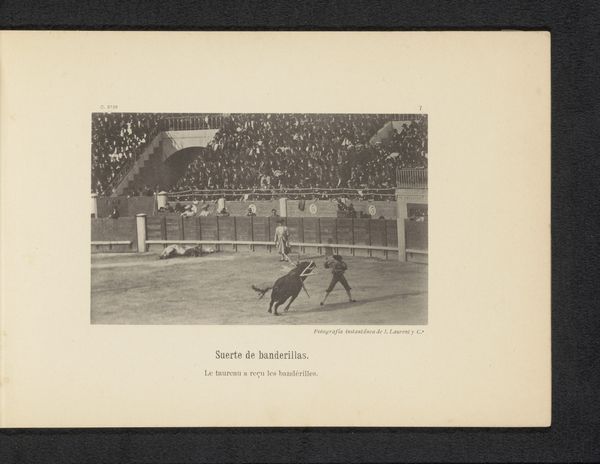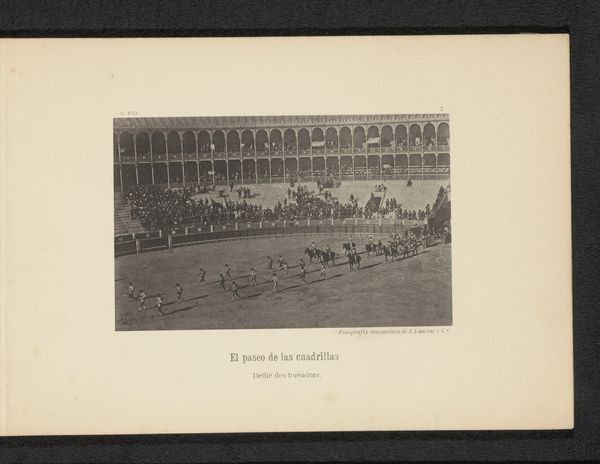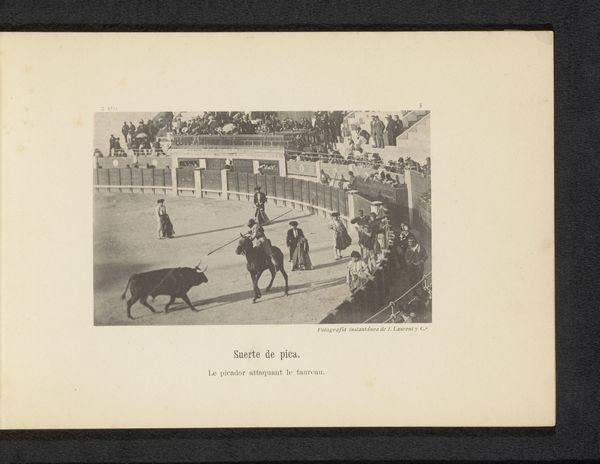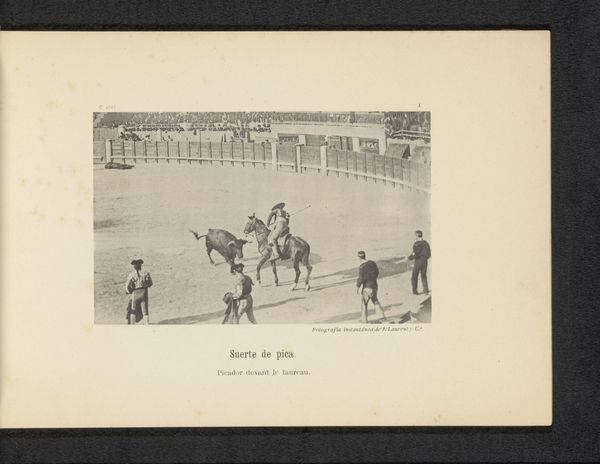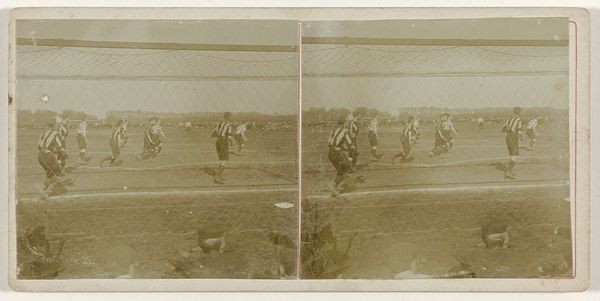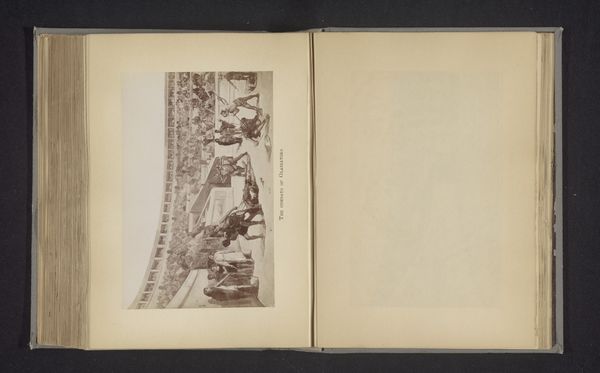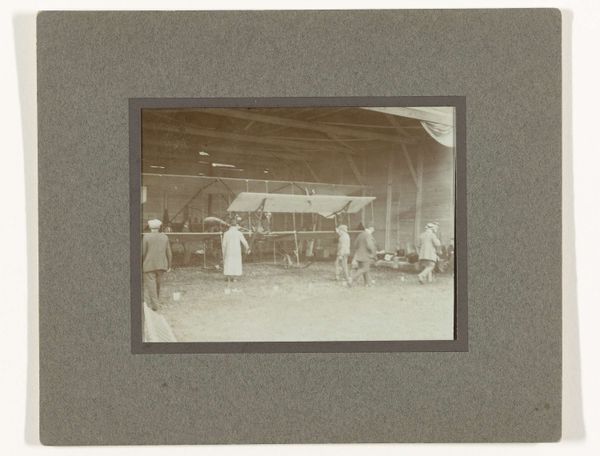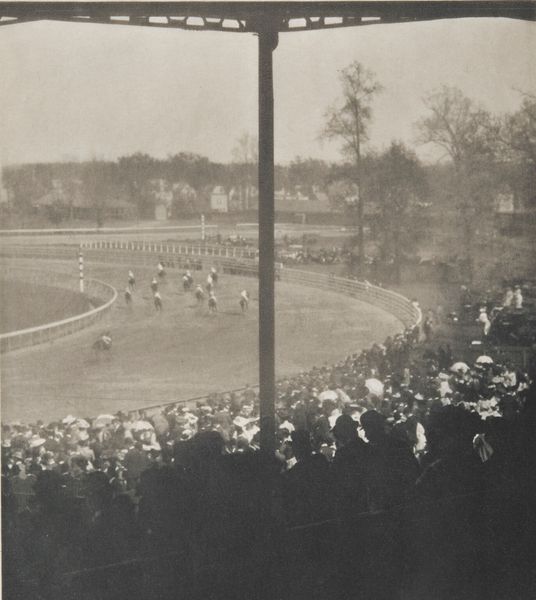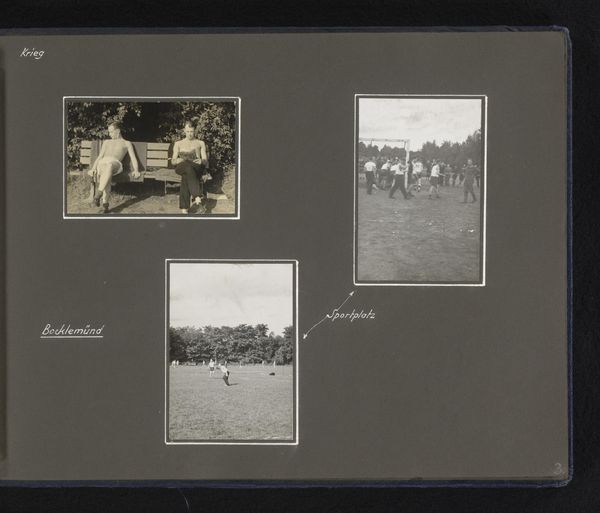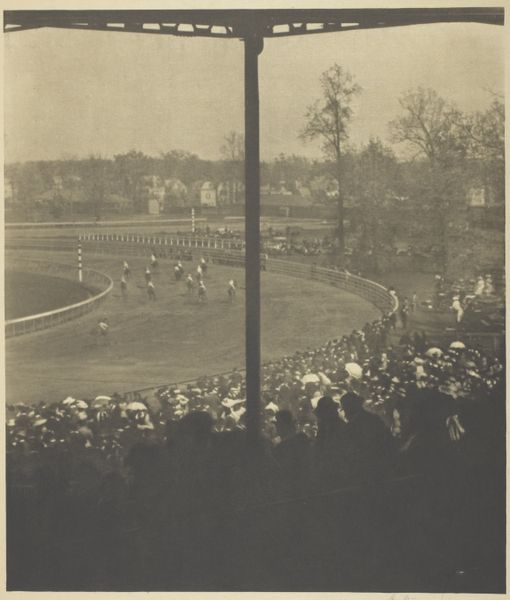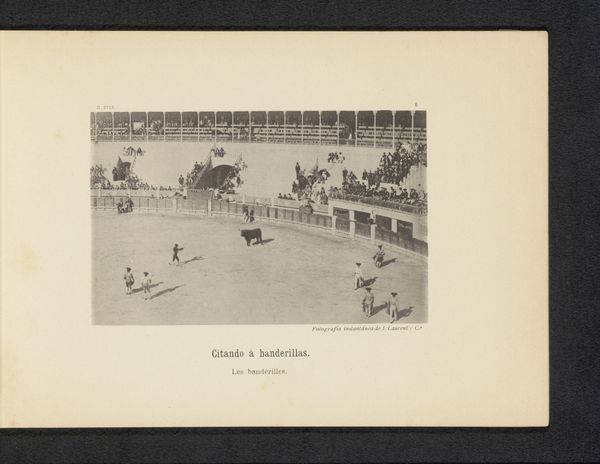
Matador in gevecht met een stier in de stierenvechtersarena van Carretera de Aragon te Madrid c. 1880 - 1890
0:00
0:00
juanlaurent
Rijksmuseum
Dimensions: height 92 mm, width 144 mm
Copyright: Rijks Museum: Open Domain
Curator: It is fascinating how this gelatin-silver print by Juan Laurent, circa 1880-1890, depicting a bullfight in Madrid, captures a spectacle for mass consumption. What do you make of it? Editor: Well, it's certainly action-packed! The composition, with the crowded arena and the drama in the ring, makes you feel like you are there. What strikes me, though, is how photography immortalizes what was actually a very physical, material event into something… well, more permanent, less embodied, if that makes sense. How might a Materialist approach this? Curator: Precisely! It’s not merely documenting an event but transforming brutal labor into a consumable image. We should consider the industrial processes behind creating gelatin-silver prints. Who produced the photographic materials? What was the labor like? Consider how Laurent, through photographic means, transformed animal suffering and human performance into a commercial product, a token of Spanish identity, reproducible and accessible. The technology itself enabled new forms of art and spectatorship. Editor: So, you're saying it’s not just the subject of the photograph but also the photograph *as* an object that holds significance? The move from the lived, embodied experience of a bullfight to a photograph as a product and artifact. Curator: Exactly. The shift from performance to photographic commodity, that’s where we locate meaning. Ask yourself who consumed these images and what social rituals or ideas did their distribution bolster or challenge? Also, consider: were other processes, say painting or printmaking, adequate for this spectacle? Why photography? Editor: So, thinking about how photographs like these circulated helps us understand the intersection of labor, leisure, and industrialization. This changes everything for me. Curator: Indeed. This photograph offers insight into the networks of production, distribution, and consumption shaping the modern world.
Comments
No comments
Be the first to comment and join the conversation on the ultimate creative platform.
